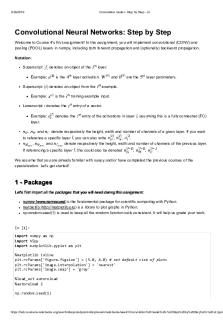Scott Rae\'s Seven Step to Moral Reasoning Model PDF

| Title | Scott Rae\'s Seven Step to Moral Reasoning Model |
|---|---|
| Author | Patricia Hannah Jamelarin |
| Course | Ethics |
| Institution | De La Salle University – Dasmariñas |
| Pages | 1 |
| File Size | 57.9 KB |
| File Type | |
| Total Downloads | 11 |
| Total Views | 218 |
Summary
Scott Rae's Seven Step to Moral Reasoning Model Scott Rae’s model for moral reasoning presents a Seven Step Approach to moral analyses and evaluation. It is oriented towards virtues and principles with consideration of consequences as a supporting role (Rae 2018). This model is free from cultural, e...
Description
Scott Rae's Seven Step to Moral Reasoning Model Scott Rae’s model for moral reasoning presents a Seven Step Approach to moral analyses and evaluation. It is oriented towards virtues and principles with consideration of consequences as a supporting role (Rae 2018). This model is free from cultural, ethnic, and religious background and biases, though it is consistent/uses biblical principles. The 7-step model is as follows: 1. Gather the facts 2. Determine the social issues 3. Determine what virtues/principles have a bearing on the case 4. List the alternatives 5. Compare the alternatives with the virtues/principles 6. Consider the consequences 7. Make a decision 1. Gather the facts The simplest way of clarifying an ethical dilemma is to make sure the facts are clear. Ask: Do you have the facts that are necessary to make a good decision? What do we know? What do we need to know? In this light it might become clear that the dilemma is not ethical but about communication or strategy. 2. Determine the ethical issues Ethical interests are stated in terms of legitimate competing interests or goods. The competing interests are what creates the dilemma. Moral values and virtues must support the competing interests in order for an ethical dilemma to exist. If you cannot identify the underlying values/virtues then you do not have an ethical dilemma. Often people hold these positions strongly and with passion because of the value / virtue beneath them 3. Determine what virtues/principles have a bearing on the case In an ethical dilemma certain values and principles are central to the competing positions. Identify these. Determine if some should be given more weight than others. Ask what the source for the principle is - constitution, culture, natural law, religious tradition...
4. List the alternatives Creatively determine possible courses of action for your dilemma. Some will almost immediately be discarded but generally the more you list the greater potential for coming up with a really good one. It will also help you come up with a broader selection of ideas. 5. Compare the alternatives with the virtues/principles This step eliminates alternatives as they are weighed by the moral principles which have a bearing on the case. Potentially the issue will be resolved here as all alternatives except one are eliminated. Here you must satisfy all the relevant virtues and values - so at least some of the alternatives will be eliminated (even if you still have to go on to step 6). Often here you have to weight principles and virtues - make sure you have a good reason for each weighting. 6. Consider the consequences If principles have not yielded a clear decision consider the consequences of your alternatives. Take the alternatives and work out the positive and negative consequences of each. Estimate how beneficial each positive and negative consequence is - some might have greater weight than others. 7. Make a decision Ethical decisions rarely have pain-free solutions - it might be you have to choose the solution with the least number of problems / painful consequences. Even when making a “good” decision you might still lose sleep over it!...
Similar Free PDFs

Moral Reasoning in GEC 008
- 2 Pages

Convolution model Step by Step v2a
- 22 Pages

Seven Steps To Subnetting
- 4 Pages

Seven Threats to Ethics
- 40 Pages

BCD to decimal seven segment
- 16 Pages

How to teach grammar scott thornbury
- 190 Pages
Popular Institutions
- Tinajero National High School - Annex
- Politeknik Caltex Riau
- Yokohama City University
- SGT University
- University of Al-Qadisiyah
- Divine Word College of Vigan
- Techniek College Rotterdam
- Universidade de Santiago
- Universiti Teknologi MARA Cawangan Johor Kampus Pasir Gudang
- Poltekkes Kemenkes Yogyakarta
- Baguio City National High School
- Colegio san marcos
- preparatoria uno
- Centro de Bachillerato Tecnológico Industrial y de Servicios No. 107
- Dalian Maritime University
- Quang Trung Secondary School
- Colegio Tecnológico en Informática
- Corporación Regional de Educación Superior
- Grupo CEDVA
- Dar Al Uloom University
- Centro de Estudios Preuniversitarios de la Universidad Nacional de Ingeniería
- 上智大学
- Aakash International School, Nuna Majara
- San Felipe Neri Catholic School
- Kang Chiao International School - New Taipei City
- Misamis Occidental National High School
- Institución Educativa Escuela Normal Juan Ladrilleros
- Kolehiyo ng Pantukan
- Batanes State College
- Instituto Continental
- Sekolah Menengah Kejuruan Kesehatan Kaltara (Tarakan)
- Colegio de La Inmaculada Concepcion - Cebu









